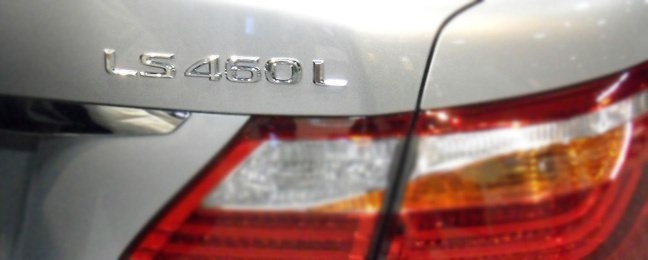

Feb 21 2012
US and Canadian VINS are required to contain a certain level of information about the vehicle, including year, make, model, body style, engine, restraint system, and GVWR. However, a lot of important vehicle details are encoded in the VIN by some OEMs, and not by others. Working with VIN data can be tricky business when they're used in different ways by the 40+ US passenger vehicle makes. This article explains a few key concepts related to VIN decoding and something called style matching, that are critical to working with VIN data successfully.
Check out our article VIN Decoding Part II: What's in the VIN for more details about what is encoded directly in the VIN number.
The most significant vehicle descriptor that some OEMs leave out of the VIN is trim. "Trim" (also commonly referred to as "Trim level" or "Badging") is a term that is used a bit ambiguously in the automotive data realm. The most common usage, which seems to best reflect OEM and dealer usage, is to indicate a subset of default vehicle configurations below the model level.
Not all models have multiple trims (view this post for examples), but most do. This is best illustrated by example. Consider the difference between a 2012 Nissan Quest 3.5 S and a 2012 Nissan Quest 3.5 LE. In this example, "3.5 S" and "3.5 LE" are two trims under the "Quest" model. The difference between trims can be quite significant, and yet, in this case, Nissan uses the same VIN patterns for both of these trims.
Other significant vehicle details not encoded in the VIN by some OEMs include vehicle style (a further classification below trim level, described below) and transmission. And, none of the US OEMs encode installed option/package information or paint color in the VIN.
A vehicle style generally describes a default vehicle configuration, without any options or optional packages added. Style is the classification just below trim, and is the lowest-level, most detailed classification used in automotive data to describe a vehicle. It usually corresponds to a unique manufacturer model number, and sometimes (primarily with makes manufactured by Ford and GM), the combination of a manufacturer model number and required package code. As described above, not all models have multiple trims (some only have a single, "base" trim). Similarly, not all trims have more than one style.
Let's again consider the example of the 2012 Nissan Quest. Say we have a VIN, JN8AE2KP9C9123456. Based on the VIN number, most VIN decoders will identify this as a 2012 Nissan Quest 4-door minivan with front wheel drive and a 3.5L V6 engine. But, since Nissan did not encode the trim in this VIN, we don't know if it's the 3.5S, 3.5SL, 3.5SV, or 3.5LE. These are significantly different cars with an MSRP ranging from $27,750 to $41,350! In this case, there are four styles tied to the VIN JN8AE2KP9C9123456.
Data providers like DataOne maintain a database of vehicle styles, with a broad spectrum of vehicle information tied to each style. This includes detailed specifications, standard installed equipment, optionally available equipment, possible interior fabrics and exterior paint colors, warranty, service intervals, MPG, recalls, crash test ratings, and more. The primary objective in VIN decoding is to match your VIN number to as much detailed information about the vehicle as possible--ideally a single style record.
In many cases, the OEM makes this process easy and encodes each of their VINs with enough information to determine the exact vehicle style. In these cases, you have immediate access to very precise and comprehensive data. There are two ways VIN decoders handle the cases where OEMs encode VINs with too little information to determine a single style:
DataOne's VIN Decoder API web service provides you with both #1 and #2 above. This allows you to use the data that is shared or "common" across the four styles in cases where you only know the VIN. In cases where your inventory data source provides additional details in addition to VIN (perhaps the trim name or manufacturer model number from the DMS), you can use that information to select a single result from the list of four styles. This allows you to retrieve more precise information than is included in the data shared across all four styles. The additional vehicle details (trim, model numbers, color and option codes) can be included in the call to our VIN Decoder API, which will use this information to provide a single matching vehicle style whenever possible. This process of trying to match a VIN to a single style is commonly referred to as "VIN-to-Style" matching, and DataOne's latest generation VIN Decoder API does it very well.
For more information about using additional vehicle details to match a single style, check out our article "How to Use DMS Data to Improve VIN Decoding."